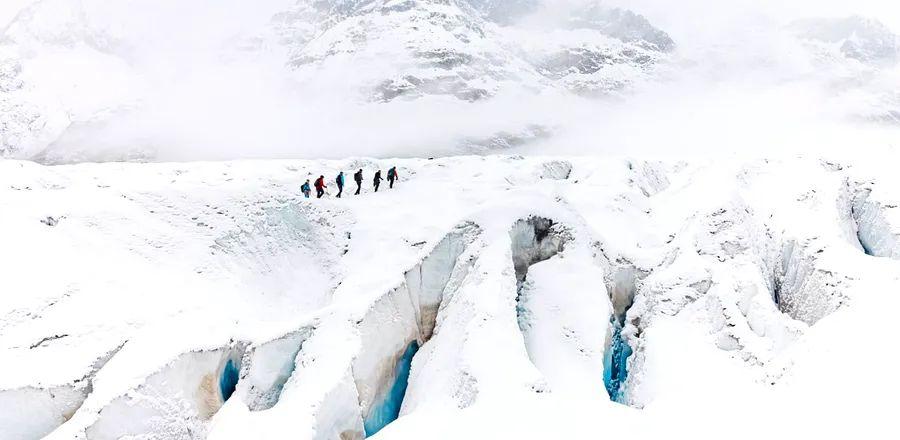My Experience Hiking the Largest Glacier in the Alps

Surrounded by a vast expanse of ice, I traverse the Great Aletsch Glacier, located southeast of Bern in Switzerland’s core—the largest, longest, and thickest glacier in the Alps. Designated as part of the first Alpine UNESCO World Heritage site in 2001, it’s a breathtaking sight: covering 31 square miles and reaching depths of up to half a mile, the glacier holds over 10 billion tons of ice, so immense it can even be seen from space.
As my crampons crunch against the solid ice, exhilaration courses through me. Yet, gazing across the endless marbled ice dunes marked with gray rock and the daunting crevasses we must navigate during this six-hour trek, a hint of fear creeps in.
“Stay right on my path,” mountain guide Kurt Burgener shouts as I pause on a precarious, narrow ledge. My fellow hikers and I are tethered together, following him through a maze of fissures like a group of preschoolers on an adventure.
If anyone can guide us safely through this challenging stretch, it’s Burgener. At 50, he’s been a certified mountain guide in the Swiss Alps for half his life. Growing up beside the Aletsch, he’s been walking this glacier since he was just five years old.

Photo by Hassen Salum/ATTA
I take a deep breath, align my feet with his exact boot prints, and shuffle across, deliberately avoiding the void on either side. Once I find my rhythm with Burgener’s steps, I glance up to see the sun breaking through the clouds, revealing the majestic Bernese Alps emerging from the mist. My spirit feels invigorated, and I can’t help but exclaim, “Oh my God,” repeatedly as the light dances over the deep ice chasms, highlighting vibrant turquoise patches. Yet, this buoyancy is tempered by a sense of gravity.
Burgener points out a location where the ice has receded, exposing sharp rock formations. He shares that in the last four decades, he has witnessed a significant reduction in ice. “Every year, or even within months or weeks, the access to glaciers must be altered or reassessed,” he explains. Scientists echo this sentiment: Swiss glaciers experienced their highest melt rate in 2022, losing 6 percent of their volume. Indeed, the effects of global warming are starkly visible in the Swiss Alps, where temperatures have been rising at nearly double the global average in recent decades. Experts caution that Alpine glaciers—and half of the world’s glaciers—could vanish entirely by 2100.
Previously, reading about climate change statistics felt abstract, but now I’m acutely aware of what stands to be lost—and the unique opportunity this experience presents. Later, when I speak with Emmanuel Salim, an assistant professor at the University of Toulouse studying the impact of climate change on glacier tourism in the Alps, he reinforces my thoughts. “Last-chance tourism is not just about witnessing these glaciers before they disappear,” he notes, “but also about grasping the realities of our world.” By experiencing climate change directly, he adds, we forge a personal connection to the crisis. As I stand before the dazzling white glacier, I realize I have.

1

2

3

4

5
Evaluation :
5/5